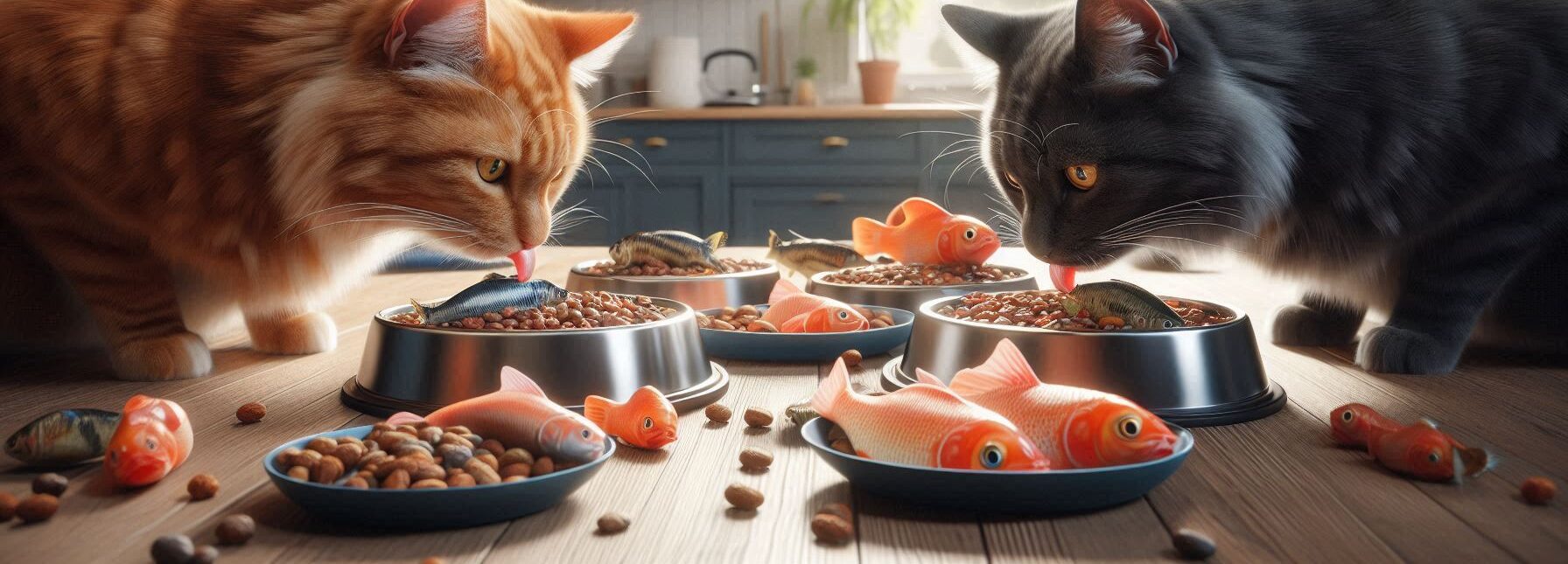Please Note: This post may contain affiliate links. If you click one of them, we may receive a commission at no extra cost to you. As an Amazon Associate, I earn from qualifying purchases.
One of the most important things we can do for our cats is make sure they eat well. A pleased cat is one that has eaten well, just like I feel after eating a pizza!
But let's be honest: it can be hard to figure out what cat food to buy, like trying to find your way through a maze while blindfolded. Let's break down the basics of cat nutrition in a way that even my cat could comprehend (if only she cared!).
Top Takeaways and Key Concepts
- Choose cat food with high-quality animal protein as the main ingredient.
- Limit carbohydrates to small amounts to prevent overweight and related health issues.
- Gradually introduce new foods, mixing them slowly to avoid digestive upset.
- Monitor your cat’s health and behavior for signs of allergies or nutritional issues.
- Read labels carefully: check guaranteed analysis, ingredients, and brand reputation.
Article Summary
Providing proper nutrition is essential for a cat’s health and happiness. Cats are obligate carnivores and require high-quality animal protein, while carbohydrates should be limited to prevent obesity and health problems. Gradual introduction of new foods, including wet and dry options, ensures proper digestion and hydration. Monitoring your cat’s behavior, scratching, and bowel habits helps identify potential allergies or nutritional deficiencies, and any dietary changes should be made under a vet’s guidance. Careful label reading, including guaranteed analysis and ingredient lists, ensures your cat receives a balanced diet with adequate protein, fat, and nutrients.
Video Summary
Handy Amazon Shopping Directory for Cat Supplies
Cat Food - Cat Toys - Cat Health - Grooming - Carriers - Cat Beds - Apparel
Furniture - Cat Doors - Collars - Feeding/Watering - Flea/Tick Control - Treats
Jump to Content
The Basics of Feeding Cats
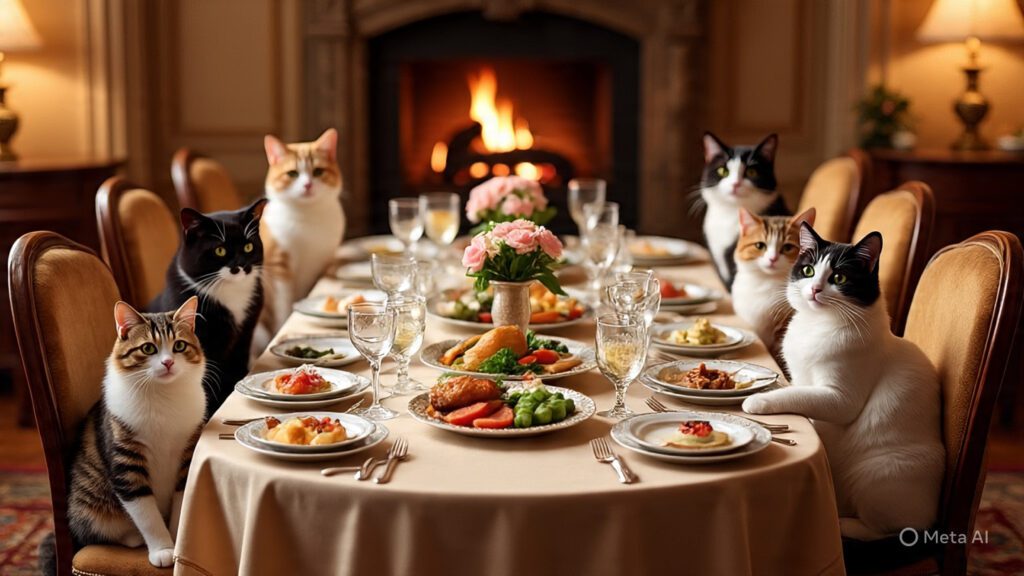
Did you know that cats have to eat meat? This indicates that meat is their main source of nourishment.
Dogs can eat grains and vegetables and be happy, but cats require protein from animals to stay healthy. You might be wondering why this is so important. Well, protein has amino acids like taurine that are very important for heart health and vision.
It's interesting that not all proteins are the same. When picking out cat food, make sure that the first few ingredients are high-quality sources of protein, such chicken, turkey, or fish.
When choose the correct food for your cat, the ingredients are very important. If you see words like “meat by-products” on a cat food label, you should be suspicious and think about switching brands. When a product uses vague language, it usually means that it has animal parts in it that aren't identified. These parts may not be as healthy and may not be what most pet owners think of when they think of high-quality cat food. Cats need real, recognized protein sources that are good for their health and energy, not mystery meat.
Now, let's talk about the carbs that cats eat. A lot of people think that all carbs are bad for cats. It's true that cats are obligate carnivores, which means they should mostly eat meat. However, they can digest modest amounts of carbs without any major problems. Rice or peas can give you some energy and fiber, but they shouldn't be the main ingredients.
That being said, moderation is very important! A cat that eats too many carbs might become overweight, which is a rising worry for indoor cats who may not get enough exercise. These fuzzy friends like to lie in the sun or take naps instead of chasing imaginary mice or playing about. Because of this, they can easily gain too much weight if they don't get enough activity to balance off the calories they eat.
Being overweight isn't just about how you look; it may also be bad for your cat's health, leading to diabetes, joint problems, and even a shorter life. So, it's okay for cats to eat some carbs, especially if they come from healthy sources. However, it's important to keep an eye on how much they eat and make sure their diet is balanced overall.
When choosing cat food, look for brands that use high-quality proteins as the main ingredient instead of fillers or low-quality by-products. Carefully reading the labels will help make sure your cat gets the nutrients she needs without extra ingredients or too many carbs that could make her gain weight.
To sum up, knowing what's in your cat's food is really important for her health and happiness. You may help your furry buddy have a healthy life by focusing on high-quality ingredients and keeping an eye on the amount of carbohydrates in her food. This will give her enough energy to play instead of just lying about all day. If you pay attention to the little things now, you and your pet will have happier days ahead.
The Big Argument: Wet Food vs. Dry Food
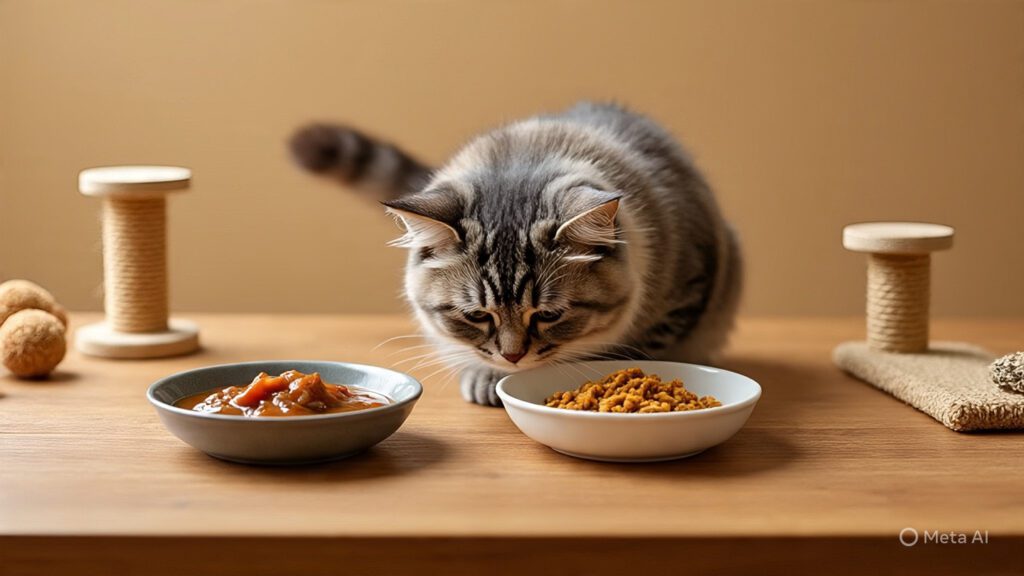
Another big question in cat nutrition is whether to feed your cat dry or wet food.
Dry kibble, on one hand, is more convenient and assists in maintaining cleaner teeth; but, wet food on the other hand, is high in moisture content and more often than not, makes picky cats eat as it has aroma (which reminds me of my previous baked recipe in a positive manner).
I don't think there's a simple answer to this; it usually depends on what your kitty likes and needs!
Some experts say that giving cats both dry and wet food is the best way to make sure they get all the nutrients they need and drink enough water. This is especially crucial because many cat owners can tell you that most cats don't drink enough water on their own. Have you ever seen a cat flop around its water bowl and then leave without drinking? This is a regular sight that shows how they naturally don't want to drink as much.
Congratulations! If you've noticed that your cat doesn't want to drink from her bowl but goes crazy for tuna-flavored wet cat food, you should know that she's not alone. You might have just found a great way to help her drink more water. Wet food usually has more moisture than dry kibble, which might help your cat get a lot of the water it needs every day. This is especially good for cats that are prone to urinary tract problems or that need extra water because of other health difficulties.
It is important to slowly add any new foods or diets to your cat's routine, though. Cats are creatures of habit, therefore they don't enjoy it when their diet changes suddenly. A rapid change can upset the stomach, causing vomiting or diarrhea, which is absolutely not what you want! Mix a little bit of the new wet food with her regular kibble instead. Then, over the course of many days or even weeks, gently increase the amount of wet food until she is used to it.
This slow change gives your cat's digestive system time to adjust and gives her an opportunity to get used to new tastes and sensations without feeling overwhelmed. Watch how she reacts; if she looks open to and appreciates the new things, you're on the correct route!
Also, think about giving your cat different kinds of wet food besides only tuna. This will make mealtime more interesting for her and encourage her to eat more regularly. It's fantastic for hydration and nourishment, but you need to be careful not to eat too much of it. If you don't balance it with the right amount of dry food, you could gain weight.
In short, mixing both types of diets might be a good way to make sure your cat gets the water and nutrients it needs. By paying attention to what she likes and changing her diet slowly instead of all at once, you may make her meals more delightful. Every delicious bite will be good for her health and happiness!
Dietary Needs of Cats
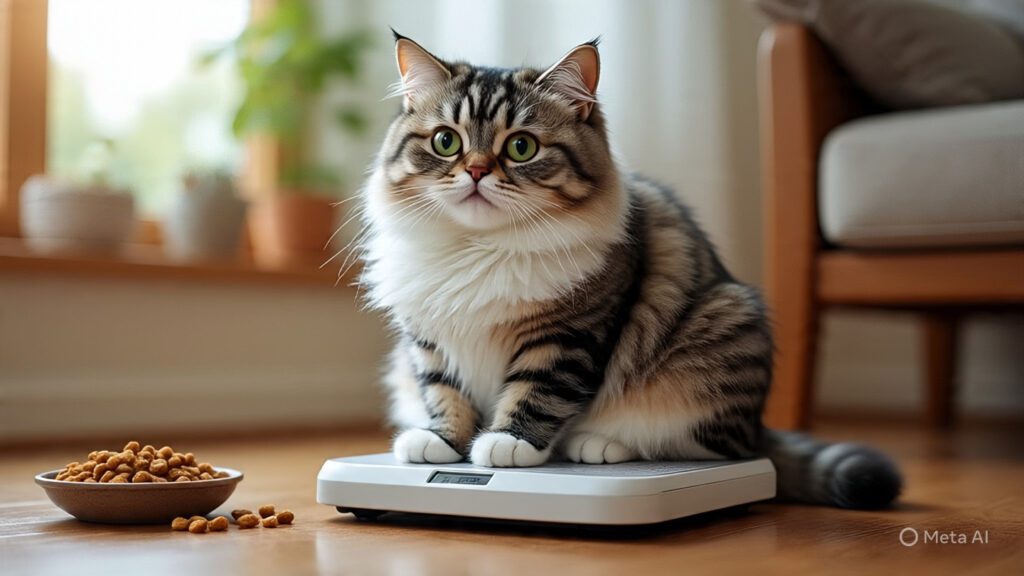
Because every cat is different, we need to talk about particular dietary needs: We all have different body types, which is why we need varying amounts of nutrients.
For instance, I might look different as an older cat than as a fast, active kitten. If your pet has diabetes, kidney difficulties, or any other health issues, it is also a good idea to think about getting them pet food that was made just for them by experts.
Most cats, like people, have allergies that make them sensitive to a lot of things, which can make it hard to cook for them.
So, it is very important that at least one family member keeps a close check on the cat's health and behavior. It's important to keep an eye on your cat since they can be very subtle when they're in pain or unhappy. For example, if your pet starts scratching more or their bowel motions vary a lot, these could be indicators of allergies, nutritional intolerances, or other health problems. In these situations, it would be wise to think about the ingredients in her meals again or look into other possibilities that would be better for her.
It's important to think about and be careful while making adjustments to our cats' diets. You might want to make changes based on what you've seen, but I can't stress enough that you should never change a cat's food without first talking to a vet. Veterinarians are skilled professionals who can look at your cat's health needs and give you personalized recommendations on how to adjust their diet.
Changes to your diet may be essential at times because of things like age, weight loss, or health issues. A vet will help you find any possible allergens in Miss Whiskers' present diet and propose good substitutions that will keep her healthy and happy while still meeting her nutritional needs. They can suggest high-quality substitutes that keep her body in balance, making sure she obtains all the vitamins and minerals she needs for good health.
Regular visits to the vet not only let you keep an eye on your cat's health, but they also provide you a chance to talk about any worries you have about her nutrition or changes in her behavior that you've seen at home. This proactive strategy makes sure that any problems are dealt with right away, before they get worse.
In short, paying close attention to your cat's routines is important for her health. If you see any changes in her scratching or bowel habits, you should look at her nutrition and health more closely. However, you should always talk to a vet before changing your cat's food. They know how to make the best changes for your cat's specific needs and long-term health and happiness.
How to Read Animal Feeding Instructions Like A Pro
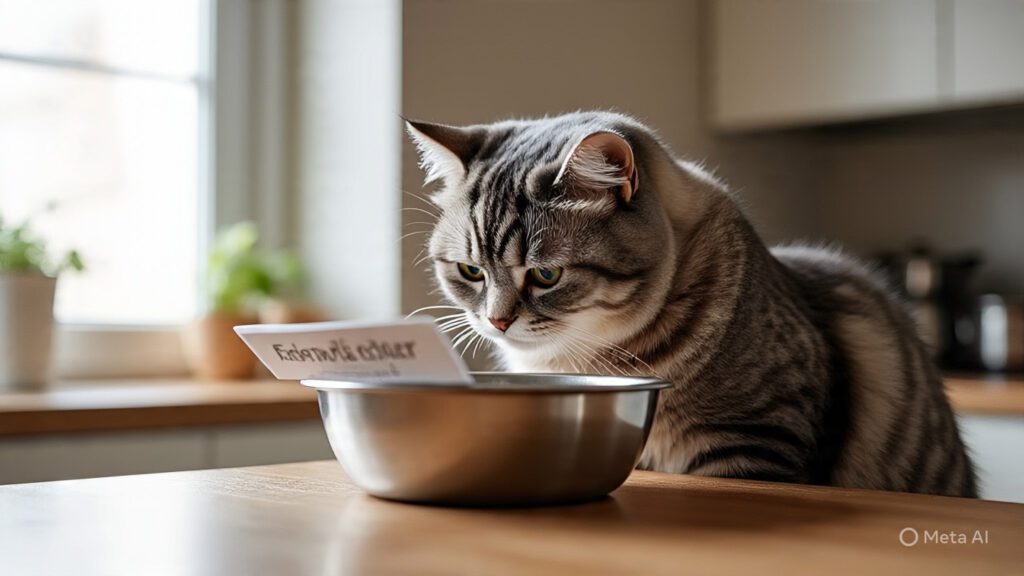
One of the most important things for pet owners to learn is how to read the animal feed instructions. However, as far as I know, this is a time-consuming task.
Reading feeding instructions is a skill that comes in handy when you need to set up an important meeting about your pet's future.
First, it's important to look at the guaranteed analysis on the label when judging cat food. This part gives important information regarding the food's nutritional value, especially the amount of protein and fat it contains. These percentages are very important because they tell us how much energy our cats will get from each serving size. Protein is important for building muscle and being healthy in general. Fat, on the other hand, is a concentrated source of energy that also helps keep skin and coat healthy.
Next, you should look at the lists of ingredients. A shorter and clearer list usually means that the quality is better overall. You should be able to recognize the ingredients, and they should come from real foods instead of by-products or fillers. The first ingredient in high-quality cat food is usually actual meat. This guarantees that your cat is getting enough protein in their diet.
Some packaging may include marketing terms like “natural” or “holistic” on it, though. These words may seem good, but they are sometimes used more as a way to market a product than to show how good it is or how good it is for you. So, it's important to look into the brand's reputation more closely and find out how they get their materials and make their products. Find brands that are open about where their ingredients come from and how they are made.
You might also want to look for products that were made with help from veterinary nutritionists or that fulfill the standards set by groups like the Association of American Feed Control Officials (AAFCO). This gives you even more confidence that the food is good for you.
Also, be careful of claims that sound too good to be true and promise amazing advantages without any scientific proof. When choosing your cat's food, always put evidence-based information first. You may also learn how well a certain meal works for different cats by reading testimonials from other pet owners.
To sum up, verify the guaranteed analysis for protein and fat percentages to see how much energy your cat's food has. Then, look closely at the lists of ingredients for signs of quality, but be careful with words like “natural” or “holistic” that are used in marketing. You can make smart choices about what goes in your pet's bowl by following these steps. This will make sure they get not only food but also a balanced diet that is right for them!
Suggested Resources:
Understanding Your Cat's Nutritional Needs
https://www.aspca.org/pet-care/cat-care/cat-nutrition
Feeding Your Senior Cat
https://www.humanesociety.org/resources/feeding-your-senior-cat
Frequently Asked Questions
What type of protein should be the main ingredient in my cat’s food?
High-quality animal protein such as chicken, turkey, or fish should be listed as the first main ingredient to support muscle development and overall health.
Are carbohydrates safe for cats to eat?
Cats can tolerate small amounts of carbohydrates, but too much may lead to weight gain. Protein should always remain the primary nutrition source.
Is wet food better than dry food?
Both wet and dry food offer benefits. Wet food supports hydration, while dry food can be more convenient. Many cats do well on a balanced mix of both.
How should I introduce new foods to my cat?
Always transition gradually by mixing the new food into the current food over several days or weeks to avoid digestive upset.
What signs could indicate a nutritional issue or food allergy?
Excessive scratching, changes in stool, vomiting, or behavior changes may signal a problem and should be discussed with a veterinarian.
Do senior cats need different nutrition than younger cats?
Yes, older cats often require modified diets with adjusted nutrients depending on their health, weight, and activity level.
What should I look for when reading cat food labels?
Check the guaranteed analysis for protein and fat percentages, ensure real animal protein is listed first, and avoid vague by-product ingredients.

Kevin Collier is a dedicated feline enthusiast and expert contributor at CatFAQ.com, where he shares his knowledge on cat health, training, and overall well-being. With years of experience caring for and studying cats, Kevin provides insightful tips and practical advice to help cat owners nurture and understand their pets better. His passion for enhancing the human-animal bond shines through in his articles, making them a valuable resource for anyone looking to improve their cat’s quality of life. Whether it’s training techniques or health care tips, Kevin aims to empower cat owners with the information they need to ensure their furry companions thrive.

